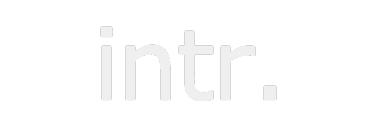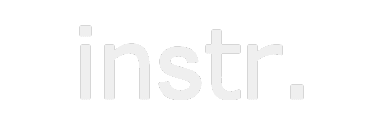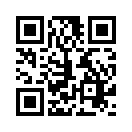[036] Ligand-gated ion channel (GB#113G02) | 基礎医学教育研究会(KIKKEN)Lab

●What is a ligand?
Even in katakana words in Japanese, if it is something proper name, many people will give up if it can not be helped but the unfamiliar words “ligand” usually haze somewhat. A variety of “specific substances that bind to receptors” are called ligands. What you do not understand is that you use the Japanese “Jyuyoutai” representing a receptor, whereas the “ligand” that binds to it is not balanced in Japanese class (haha).
—
Nonetheless, the ligand is a coined word based on the Latin word meaning “to bind”, and it also seems to be a different feeling in a floating placein in line with the receptor or binding site in the English world as well. It may be said that it is a special term. Regardless, the ligand-gated ion channel is a device that is embedded in the cell membrane and passes ions (or blocks) by binding a specific substance (ligand) to a receptor integrated with the channel.
Contents
- 1 ● The channel is integrated with the receptor
- 2 ● Ligand-dependent channels are classified by ligands
- 3 ● Nicotine also acts on the acetylcholine receptor channel
- 4 ● Nicotinic receptors are opened by acetylcholine
- 5 ● Acetylcholine does not stick to the receptor because it likes
- 6 ● Ligands need to be tidied up
- 7 ● Even though channels allow ions to pass through, only a few differences
- 8 ○ Referenced sites
- 9 ○ Related articles
- 10 Referenced books
● The channel is integrated with the receptor
The function of “ion channel” and the function of “receptor binding with specific ligand” are different functions. There are also many ion channels without receptors for opening and closing the channels. On the other hand, there are many receptors that themselves do not function as ion channels, even if they are buried in cell membranes like channels. Rather, ion channels with receptors are exceptional. From the side of the channel it is confusing because it is called “ligand-gated channel” and the same protain from the side of the receptor is called “ion channel type receptor, ionotropic receptor”.
(Receptors penetrating the cell membrane other than the ion channel type are indirectly induced by changing the structure and function of other substances and are called “metabotropic receptors”.)
● Ligand-dependent channels are classified by ligands
The channel depends on the type of ion passing through, while the receptor is distinguished by the ligand binding. Many voltage dependent ion channels are exclusively for ions. However, there are few ligand-gated ion channels that pass only one type of ion. It is roughly divided into cations and anions. On the other hand, ligand-dependent channels are often referred to as ligand names of receptors, as it is a principle that the receptor is dedicated to a specific ligand. Therefore, in fact, existence as “ion channel type receptor” is more broad. Or because it is functionally a channel, the name of the ligand is usually called the “○ ○ receptor”.
In the case of passing a cation as an ion channel, a ligand that is exclusively bound to acetylcholine, serotonin, glutamic acid, adenosine triphosphate (ATP), and those that pass through anions are gamma aminobutyric acid (GABA) and glycine A type that exclusively uses it as a ligand and the like are known. Among them, the channel that uses acetylcholine (ACh) as a ligand is a representative ligand-gated ion channel, it is said to be one of prototypes among several ligand-gated ion channels.
● Nicotine also acts on the acetylcholine receptor channel
An ion channel with acetylcholine as the ligand ![]() is a channel that selectively passes positive ions including Na +
is a channel that selectively passes positive ions including Na + ![]() and K + when acetylcholine binds. From that point of view, it is probably “acetylcholine-bonded ion channel”, but in fact it is called by the name “nicotinic acetylcholine receptor”. Sometimes short, it is “nicotinic receptor”.
and K + when acetylcholine binds. From that point of view, it is probably “acetylcholine-bonded ion channel”, but in fact it is called by the name “nicotinic acetylcholine receptor”. Sometimes short, it is “nicotinic receptor”.
Nicotine is that nicotine contained in tobacco, not originally in the human body. Why do you call the receptor in human with the name of the substance in other places? Although I was not convinced somewhat when I first heard it, this is a standard for further typing acetylcholine receptors. Nicotine is a very toxic substance that causes a very small amount of poisoning leading to death. The binding partner is “ion channel type acetylcholine receptor”. When nicotine enters the body, it activates the receptor regardless of nerve information and it will cause harm.
By the way, ligand is a substance physically working in the body, so nicotine is not a ligand. Another substance that binds to the same site as the ligand and has the same effect is called an agonist. So nicotine is an agonist of acetylcholine, as far as ion channel type acetylcholine receptor is concerned.
After all, at the moment, nicotine binds in the body only to ion channel type receptors that use acetylcholine as a ligand, and this type of receptor binds to nicotine. Therefore, “nicotine receptor” is used synonymously with “ion channel type acetylcholine receptor”. Rather, it is rarely called ion channel type acetylcholine receptor or acetylcholine binding type ion channel.
(The substance “muscarine”, which is the main component of the poison that poison mushroom has, only binds to “metabotropic acetylcholine receptor” in the body and since this receptor binds with muscarin, “metabotropic acetylcholine receptor” is called “muscarinic acetylcholine receptors”. For muscarinic receptors, acetylcholine works naturally, but nicotine does not work is also an important point. )
Acetylcholine receptors
· Ligand-gated ion channels with acetylcholine as a ligand
= Acetylcholine binding type ion channel
= Ion channel type acetylcholine receptor
= Nicotinic acetylcholine receptor
= Nicotinic receptor
· Metabotropic receptor with acetylcholine as a ligand
(⇒ works on ion channels etc. in other cooperative relationships)
= Metabotropic acetylcholine receptor
= Muscarinic acetylcholine receptor
= Muscarinic receptor
● Nicotinic receptors are opened by acetylcholine
Nicotine receptors are too famous as receptors for the neuromuscular junction, a synapse of motor neurons and skeletal muscle cells. It is also important as a synaptic receptor in the ganglion of autonomic nerves. Both act to excite cells with receptors in response to acetylcholine released as a neurotransmitter from the nerve endings facing the receptor.
Nicotine receptors of muscle cells and nicotine receptors of neurons appear to be slightly different types, but basically they work with the same structure and the same mechanism. Five clusters of proteins gathered together to form a tube that penetrates the cell membrane, two of which are the specific location and binding sites to which acetylcholine binds to the mass of the α subunit. The nicotine receptor eventually has two binding sites for acetylcholine.
When there is no ligand, the channel is closed. As for the image, there is a protrusion in the middle of the passage, which does not pass through the flow of ions.![]()
When a large amount of acetylcholine, which is a ligand, blows down around this receptor, any one of them gets caught in the binding site of the receptor. The α subunit of the receptor changes the overall shape slightly when the ligand gets in the binding site. Then, the protrusion in the middle of the aisle is retracted, allowing ions to pass. Even though acetylcholine binds to only one binding site, the channel seems to open a little. But, if they stick to each of the two binding sites, they will open more firmly.![]()
When the channel opens, the myocyte-type receptor selectively selects Na + or K + , the neuron-type receptor adds Ca 2+ selectively.
As a result, the cell deeply depolarizes the membrane potential. Depolarization reacts the voltage-gated ion channel, and if it exceeds the threshold value, the cell generates an action potential.
● Acetylcholine does not stick to the receptor because it likes
Although acetylcholine “binds” to the binding site, it does not seem to be liked and attached separately, and does not seem to be “binding” firmly. It is better to think of things that happen to be beside the receptor, among a large amount of acetylcholine, have gotten into something good. It is because acetylcholine leaves the binding site from himself, such as “Do not leave ~” when the number of surrounding acetylcholine fellows decreases. Actually, the ligand-dependent channel ligand is not served unless it is such a feeling. Even if there are no surroundings, if it is stuck, it will interfere with the next signal transmission. Some substances acting as poisons are frightening not to leave once they are combined. Nicotine binds selectively to the acetylcholine binding site, but it seems to be still better as it seems to depart when the surrounding nicotine disappears.
● Ligands need to be tidied up
In order to make ligand-gated ion channel work effectively, it is premised that the ligand is separated from the receptor immediately. To do this, ligands that did not bind around and ligands that need to be completed must be quickly cleared up. Basically, it diffuses into the tissue fluid, depending on the object it is collected as it is at the nerve endings, or it is decomposed in an appropriate way and cleansed from around the receptor.
In the case of acetylcholine, an enzyme that decomposes acetylcholine by the receptor, acetylcholinesterase is waiting, and then will decompose the incoming acetylcholine into its components, choline and acetic acid. One acetylcholine released at the neuromuscular junction seems to be cleared up in about several milliseconds. Once decomposed, it is no longer acetylcholine, so it will not work on the receptor. Each component is recovered at the nerve endings, synthesized again to acetylcholine and reused as a neurotransmitter.
(If you interrupt the tidying up, it also becomes poisonous. Organophosphorus insecticides such as malathion and sarin block the action of acetylcholinesterase.
● Even though channels allow ions to pass through, only a few differences
The ion channel of the nicotinic receptor is closed until the ligand binds to the receptor. However, to be exact, it seems that it is in a state of “almost (somehow closed)”. Even though these molecules are constantly oscillating irregularly and there is no ligand, sometimes the channel may open for a moment.Conversely, it is observed that the ligand is occasionally closed for a while even while the ligand is bound. From this, it seems that ligand binding works to the extent that it greatly increases the probability of opening rather than completely opening the channel.
Well, when passing things of a certain size through the hole, it does not pass at all if the hole is small, and passes easily if it is a little big, so it is only necessary to control the change in the size of this delicate hole then this kind of image is more realistic.
Similarly in the case of voltage-gated ion channels, the probability of channel opening and closing changes severely due to the change in potential. However, since it is a level that can not be expressed by animation of this site, I ignore it.
○ Referenced sites
・Table of Common Neurotransmitters(Biochemistry of Neurotransmitters and Nerve Transmission), The Medical Biochemistry Page, May 26 2017.
・Ligand-gated ion channel, Wikipedia, 2 July 2017.
・Nicotinic acetylcholine receptor, Wikipedia, 20 June 2017.
・Neurotransmitter,Wikipedia, 28 June 2017.
・Gating movement of acetylcholine receptor caught by plunge-freezing. Unwin N, Fujiyoshi Y.,J Mol Biol. (2012)
・アセチルコリン, 脳科学辞典,2015年3月26日.
○ Related articles
◆[040] シナプス伝達 neural signal transmission ![]()
◆[053] Acetylcholine receptors (GB#114B03) ![]()
◆[024] Voltage-dependent sodium channel ![]()
◆[021] action potential ![]()
◆[031] 興奮伝導 conduction of excitation ![]()
◆[028] Resting membrane potential ![]()
◆[044] 伸張反射 stretch reflex ![]()
◆[013] 細胞膜の脂質二重層 lipid bilayer of the cell membrane ![]()
◆[004] Cation and anion, attraction and repulsion ![]()
Referenced books
・Lehninger Principles of Biochemistry 6th, International Edition, Macmillan Higher Education, England.
・カラー版 ボロン ブールペープ 「生理学」, 西村書店
・Essential細胞生物学〈DVD付〉原書第3版,南江堂
・プロッパー細胞生物学: 細胞の基本原理を学ぶ,化学同人
・カラー図解 人体の正常構造と機能 全10巻縮刷版,坂井 建雄,日本医事新報社
・人体機能生理学,杉 晴夫,南江堂
・柔道整復学校協会編「生理学」,南江堂
・東洋療法学校協会編「生理学」,医歯薬出版株式会社
rev.20140618,rev.20150514,rev.20150724,rev.20160130,rev.20160221,rev.20161014
rev.20161029,rev.20161207,rev.20170505, rev.20180404.








